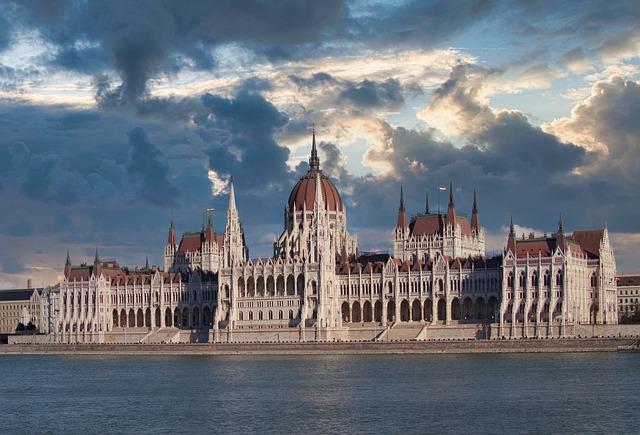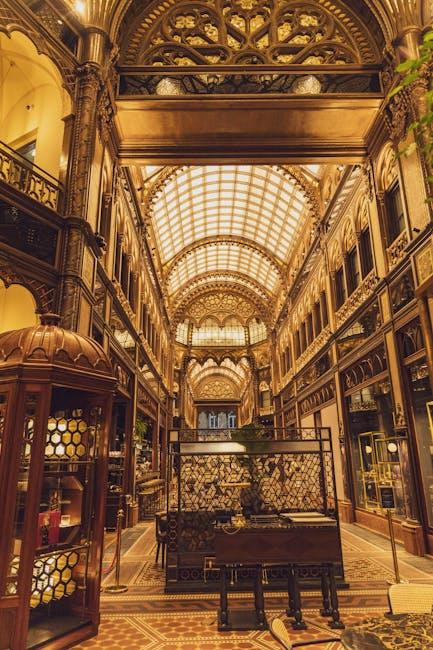In the realm of cinematic artistry, few directors have consistently pushed the boundaries of visual storytelling like Wes Anderson. “The Grand Budapest Hotel,” a film that stands as a testament to his distinctive style, invites audiences into a whimsical world teetering on the edge of reality and fantasy. This article embarks on an analytical journey to explore whether Anderson’s 2014 masterpiece is a technical marvel that redefines the art of filmmaking or an artistic experiment that misses its mark. With an optimistic lens, we delve into the film’s intricate design, narrative structure, and thematic depth, aiming to uncover the layers that contribute to its enduring allure and its place in contemporary cinema.
Cinematic Brilliance: Exploring Visual Storytelling Techniques
Wes Anderson’s The Grand Budapest Hotel is a masterclass in visual storytelling, transforming each frame into a meticulously crafted tableau. Anderson employs a symphony of techniques that coalesce to create an immersive narrative experience. Symmetry and color are at the forefront, with the film’s aesthetic precision offering a visual feast that mirrors the meticulous nature of its protagonist, M. Gustave. The use of a distinct color palette not only enhances the whimsical yet melancholic tone but also serves as a narrative device that guides the viewer through different timelines and emotions.
- Aspect Ratios: The film utilizes varying aspect ratios to differentiate between eras, seamlessly transporting the audience through time.
- Miniatures and Practical Effects: Anderson’s use of miniatures and practical effects adds a tangible, textured reality to the fictional world, making it both fantastical and authentic.
- Dynamic Camerawork: The signature whip pans and tracking shots create a kinetic energy, enhancing the comedic timing and rhythm.
By intertwining these elements, Anderson not only tells a story but crafts an experience that is both technically impressive and deeply artistic. The film stands as a testament to the power of visual storytelling, where every detail contributes to the narrative’s richness.
Masterful Performances: A Deep Dive into Character Portrayals
In Wes Anderson’s The Grand Budapest Hotel, the cast delivers remarkable performances that elevate the film to a mesmerizing blend of whimsy and depth. Ralph Fiennes, in particular, shines as the charismatic and meticulous Monsieur Gustave H., imbuing the character with a balance of charm and vulnerability that is both engaging and memorable. His ability to oscillate between comedic timing and dramatic intensity is a testament to his mastery of the craft.
- Zero Moustafa (Tony Revolori): A subtle yet powerful portrayal of loyalty and growth, providing a perfect foil to Fiennes’ Gustave.
- Agatha (Saoirse Ronan): Despite limited screen time, Ronan delivers a poignant performance that adds emotional depth to the narrative.
- Supporting Cast: The ensemble, including Adrien Brody, Willem Dafoe, and Tilda Swinton, contributes layers of eccentricity and intrigue, each actor bringing their unique flair to the film’s vibrant tapestry.
The synergy among the cast, coupled with Anderson’s meticulous direction, results in a cinematic experience where each character, no matter how minor, is crafted with care and precision, leaving a lasting impact on the audience.

Artistic Innovation: Balancing Style with Substance
Wes Anderson’s The Grand Budapest Hotel stands as a testament to the delicate dance between style and substance. Its meticulously crafted visual aesthetic, characterized by symmetrical compositions and a vibrant color palette, serves not merely as a backdrop but as a narrative device in itself. The film’s unique blend of whimsy and melancholy is underscored by its rich thematic exploration of nostalgia, loss, and the passage of time. Here, style does not overshadow substance; instead, it enhances the storytelling, providing depth and texture to an already intricate plot.
In this cinematic tapestry, Anderson employs an array of artistic techniques to create a world that is both fantastical and resonant. Key elements include:
- Bold color schemes that evoke the emotional landscape of the characters.
- Intricate set designs that transform each scene into a living painting.
- Quirky characterizations that bring an air of unpredictability and charm.
These components, woven together, reveal a film that is not just a technical marvel but a heartfelt ode to the art of storytelling. Through this masterful balance, Anderson invites viewers to not only observe but to immerse themselves in a narrative that is as substantive as it is stylish.

Recommendations for Appreciating the Films Unique Charm
To truly savor the unique charm of The Grand Budapest Hotel, immerse yourself in its vibrant tapestry of visual storytelling. Start by appreciating the meticulous attention to detail in Wes Anderson’s signature symmetrical compositions and pastel color palette. These elements aren’t merely stylistic choices; they serve to enhance the whimsical, almost storybook quality of the narrative. Notice how each frame is carefully constructed to draw you into the hotel’s bygone era, evoking a sense of nostalgia and whimsy.
- Engage with the Characters: Each character is a carefully crafted piece of the puzzle, from Ralph Fiennes’ charmingly eccentric concierge to the quirky supporting cast. Their interactions are laced with wit and subtlety, inviting viewers to explore the depths of their relationships.
- Explore the Soundtrack: Alexandre Desplat’s score perfectly complements the film’s tone, weaving through scenes with a playful yet poignant melody that underscores the emotional beats without overpowering them.
- Observe the Set Design: The hotel itself is a character, its grandiose architecture and intricate interiors reflecting the opulence and decline of a lost world.
By focusing on these aspects, viewers can appreciate how the film balances technical prowess with artistic innovation, creating a delightful experience that is both a visual feast and a narrative delight.































